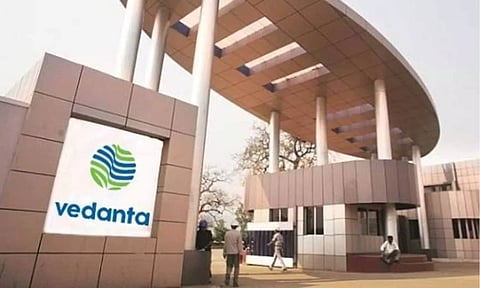A chip on India’s shoulder?
NEW DELHI: India’s semiconductor dreams had a rude wake-up call this week. The Taiwanese electronics manufacturing behemoth Foxconn withdrew from a $19.5 billion semiconductor joint venture with mining baron Anil Agarwal’s Vedanta Ltd leaving the technology industry shell-shocked. The venture was struggling to find a technology partner to manufacture the chips that are used in everything — from electronic devices to automobiles. European chipmaker STMicroelectronics was being considered as a technology partner for the venture, which was set to come up in Dholera, Gujarat, but talks had hit a dead end.
Subsequently, Foxconn said it was keen to apply for incentives under semiconductor and display fab programmes, as the contract manufacturer pledged its commitment to India. The company is actively reviewing the local ecosystem for partners. The episode has elicited sharp responses from across the political spectrum. The Congress mocked the Gujarat CM’s claims that the venture would create over one lakh jobs. The Opposition alluded to how the Taiwanese pull-out from what would have been India’s first electronic chip manufacturing unit, was reminiscent of the fates of numerous MOUs signed at the Vibrant Gujarat summits year after year.
The Minister of State for Electronics and IT Rajeev Chandrasekhar put up a brave front and said Foxconn’s decision will have no impact on India’s semiconductor fabrication plant goal. He remarked that both companies had no prior semiconductor experience and were expected to source fabrication tech from a partner.
The episode has highlighted the pain involved in the manufacturing semiconductors in India, which expects its chip market to be worth $63 billion by 2026. But it is a significantly late entrant. Most of the world’s chips are manufactured in a handful of countries. Taiwan makes more than 60% of the chips in the world. Along with South Korea, the two nations make up the lion’s share in manufacturing the most advanced chips (under 10 nanometres). This does not spell gloom for India as the American company Micron Technology has decided on investing $825 mn in the country for a chip Assembly, Testing and Packaging (ATP) unit. It is worth noting that setting up foundries for semiconductors is an extremely resource hungry activity — both in terms of capital as well as high-tech inputs.
Being a fresher, it is imperative that India creates opportunities for trusted enterprises in the country to collaborate with established international value chain partners in the spheres of chip design, fabrication/manufacturing, testing, packaging and distribution. Currently, India imports $100 bn of electronics annually of which $30 bn accounts for just semiconductors and display glass. It’s an important metric considering India’s smartphone exports have exceeded $12 bn in FY23. That is a sector that could benefit hugely with competitive pricing — if the semiconductors were built locally. There are a few things working in our favour. The Centre has earmarked a $10 billion Production Linked Incentive (PLI) package for semiconductor manufacturing. It would be unfair to assume that other international companies will not be eyeing this opportunity. The industry wishlist requires that India seriously addresses the shortcomings in the way of our incubating a semiconductor ecosystem, as it holds the key to economic supremacy in the decades to come.

